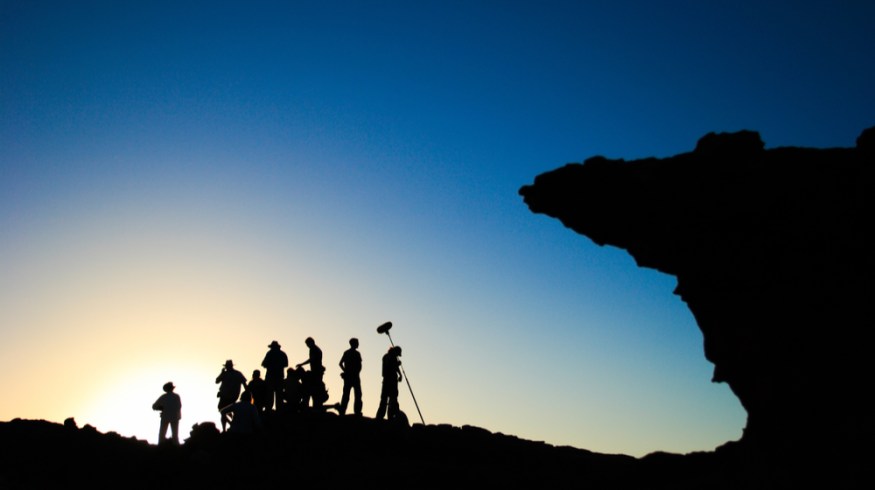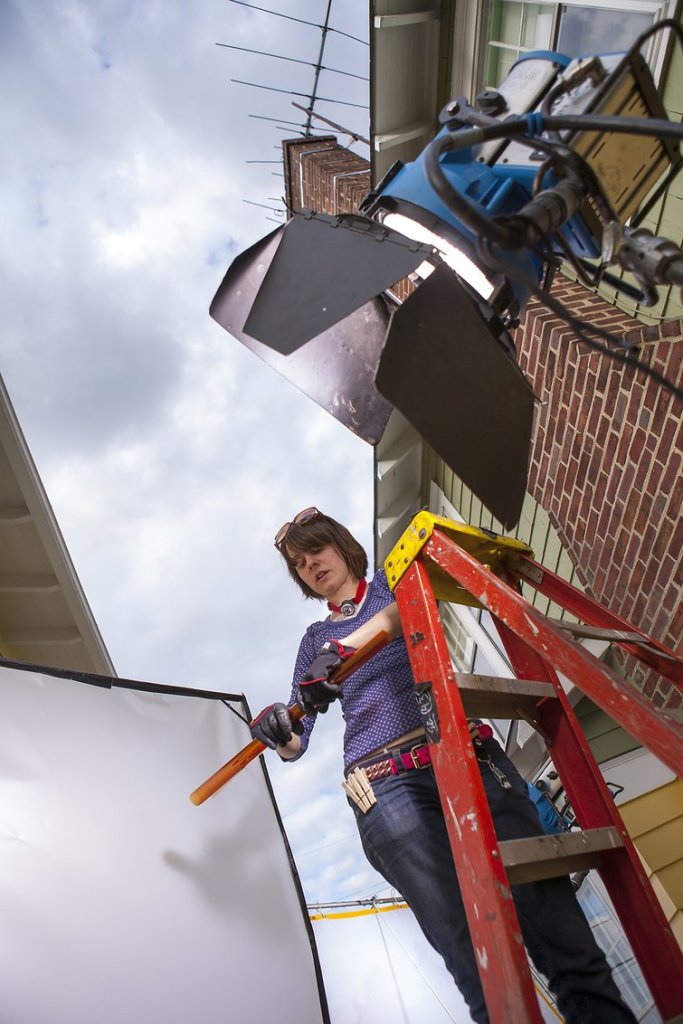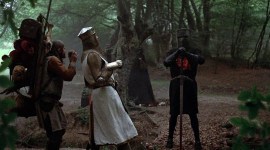
Top 6 Techniques on How to Write a Short Film Script
Short films showcase your talent—and tell a story. Here are a few tips on writing a practical (and successful!) short film script.
The short film is, perhaps, one of the most straightforward showcases of a filmmaker’s talent. Obviously, they’re shorter than features, so there isn’t as much time to layer nuance and texture into your storytelling. There’s a problem, a challenge, or an event—that’s usually it. The short film script has to execute its arc simply and elegantly, which is why it’s such an excellent showpiece. There aren’t usually many bells and whistles to get in the way of the humble short film.
Since there isn’t a raging market for filmmakers looking to option short films, chances are, if you’re interested in writing a short film script, you’re also interested in making it—be it as director, actor, cinematographer, or all three. That means your script is entirely custom to you. Features often undergo a sort of metamorphosis as they work their way through production channels and onto the screen. If you’re making a short film either for the love of production or to build out a portfolio, it’s yours.
That means your story doesn’t need to exist in a production vacuum. While a feature script that you want to sell needs to be transferable to someone else’s vision, the short film script does not. That means you don’t have to follow all the scriptwriting rules you’d need to if you want your script to blindly appeal to someone else. Writing without rules is freeing and expressive—this is where we get the real glimpse of your talent. But, there are a few things you can do to put your best foot forward.
If you need a little help coming up with your idea, check out this video:
Otherwise, let’s get on with How to Write a Short Film Script.
1. Scope Your Idea
Feature scripts often need what they need—a certain number of characters, specific locations, maybe some modest special effects. These elements all go into the creation of the script, and then production later figures out how to bring everything to life. But a short film is about your talent, and your eye as a filmmaker. That means the only necessary elements are those you choose to include.
Because short films usually require smaller crews (or no crew at all), you can scope your idea based on what’s available to you. Do you know any actors? Okay, only one? All right, start with creating an idea for one actor. What about shooting locations? Do you live near free, accessible nature sites? Are you locked down in your apartment? Where can you feasibly shoot? Now you have an environment into which you can place your single character.
If you only have one camera and one microphone, don’t set your script up for failure with production design you can’t pull off. Determine what you have and what you can do with it, and use the constraints of the medium to help shape the idea that will become your script.
The short film “Host” is a good example of this in action. The filmmakers were physically separated by the lockdowns of 2020. They couldn’t shoot together, the actors had to be capable of operating their own equipment, and the premise couldn’t be too complicated. The solution? An elegant horror short that literally just plays to all the limitations of lockdown.
2. Simplify Your Arc
The conventional wisdom, when it comes to long-form narratives, is to punish your characters—over and over. You want to throw ever-more-challenging obstacles into their path until you reach the story’s climax. We see this in books, movies, video games, and serialized content. However, in a short film script, you simply don’t have time to hammer away at your characters like this. A short film is more like an event—an experience. It should definitely communicate a difference in the world between the beginning and the ending, but it should do this directly, rather than subtly, over time.

Simplify your character arcs into direct growth, immediate conflict, or sudden change. Get right into this experience with your character(s) as soon as you can, deliver on it, and then get out. You don’t need much for a full arc in a short film: character sees something in the world that can’t (or shouldn’t) be the way that it is; character tries to change this something; things either resolve or they don’t, but the character is changed from the experience.
Tie your arc to the questions you answered when you were scoping your idea. Where can you film? Whom can you film with? What equipment do you have? What’s an interesting conflict you can create based on these answers?
3. Worldbuilding for Beginners
One of the most fun aspects of telling stories on screen is the worldbuilding. All of our favorite movies have vivid, unique worlds that they inhabit, from the decks of space ships to haunted amusement parks. Each of these worlds works in a different way. Maybe you need to see the fusion drive in the generation ship because later it’s going to blow up. We need to know how the fusion drive works in this world. Perhaps if you make the wrong kind of noise, the monsters will hear you. Are the monsters blind? What’s so important about them hearing you? There are questions like this for every story.

There’s not a lot of room for expository establishing shots or infodumps in a short film. The right sorts of stories can do this if they do it quickly, and it makes sense for the world they’re establishing. But, usually, trying to cram too much information about how things work just eats up space.
Instead, build the worlds in your short films using meaningful glances. Think of the camera as an eye. It’ll see things now and then in the world as the action unfolds. The things this eye sees are all operating according to the rules of this world (if you’re doing your job right), even if you haven’t stopped to tell us what those rules are. You don’t need an insert of the dripping umbrella to tell me it’s raining outside. The character will naturally do something with a wet umbrella when they come inside. Let this meaningful glance tell me about the rain. Does the character have to jump right into a chemical shower? Okay, so the rain’s poisonous.
Write your script as if you live in this world and abide by its rules. Keep the rules simple, and they’ll work themselves naturally onto the screen.
4. Minimize, Minimize, Minimize
Your first draft of the script will probably be too complicated. It’s easy to get carried away, especially when you’re first drafting with scenes, dialogue, or actions you think are essential to the project. If you take another look, you’ll usually find that you can simplify things—and then simplify them again. This isn’t to say that you don’t want, for example, rich and nuanced dialogue (it’s still a movie, after all), but do you need forty-five seconds of it, or will twenty seconds of beautiful acting have the same effect?

Concentrate on that single moment, that single conflict, building up to its resolution and the unfolding of the character’s direct arc in the world you’ve built using meaningful glances. Remember, too, that the world you’re creating is itself a valuable tool in the story. You may have a limited cast of characters, or you may be filming under location restrictions. The places your characters inhabit have an effect on them—be it their physical safety, their mental health, or something more metaphysical. The world itself can beat up a character the same way that a superfluous villain can. OR, it can drive them as equally insane as a gaslighting monster.
Make every part of what you’re filming work for you—do more with less.
5. The Ending Is Everything
Short films are more like exercises than experiences, so they need to prove themselves. They’re highlighting filmmaking and storytelling techniques that we usually consume in the context of much longer-form media, like movies or series, so it’s only natural that we compare the experience against what’s familiar. People (in general) watch more features than they do short films, so should the short film try to deliver the same filmic experience as a feature? Probably not.
In essence, a short film has a point. What was it trying to accomplish, in the sense of what features accomplish? If the short film is just a slice of filmmaking, then what’s the filling? What makes it worth it?

There are, of course, the standard elements that will showcase the quality of the project: good writing, good blocking, good use of space, good acting. What pulls it all together, however, is the ending. This is where the short film more or less wraps up what it was trying to do. A feature is full of moments and characters and scenes that all add up to more than the sum of its parts, but you don’t have as much room for this kind of content in your short film, which is why the final, lasting impression is so important. It’s largely what your audience will walk away with.
What this means for every project is different. But a good way to make sure you’re building toward a proper ending is to begin with one. When you’re scoping your idea, start with the finale. What cool thing are you going to do with the people you have in the space that’s available. Once you know this, work backward toward the beginning of your script. This way, you can ensure things are moving properly forward to that resonant ending.
6. Butt in Chair
This last tip is just some practical advice on bringing all this together. We’ve all struggled with finding the time to sit down and write. You want to, you try to, but your project drags on for months and months, unfinished.
So here’s the tip: Play a game called Butt in Chair. Block off an hour, put your phone away (it’s only an hour!), and stay off the internet. You can play some music, and you can get up to go to the bathroom, but those are the only activities you’re allowed. You can either write, or you can sit there and go insane. You’d be surprised how soon you start writing.
Looking for more screenwriting tips and tricks? Check out these articles:
- 7 Tips for Writing Good Dialogue in Your Screenplay
- Using the Story Circle to Turn Your Ideas into Screenplays
- The Rhetorical Triangle — Using Pathos, Logos, and Ethos in your Projects
- The Do’s and Don’ts of Writing a Tagline for Your Film or Video Project
- The Do’s and Don’ts of Writing a Logline for Your Film or Video Project
Cover image via Charlie Sperring.





